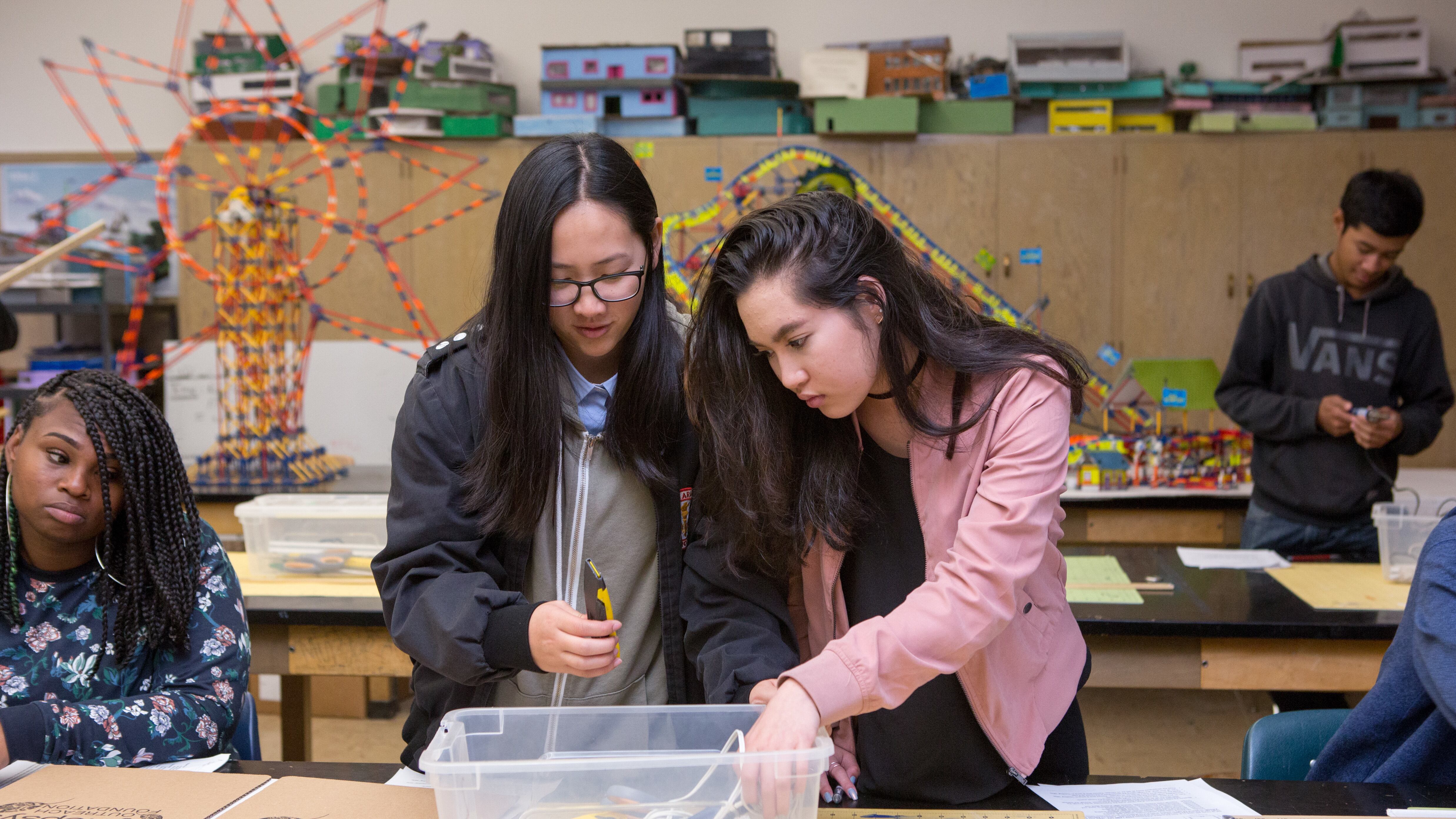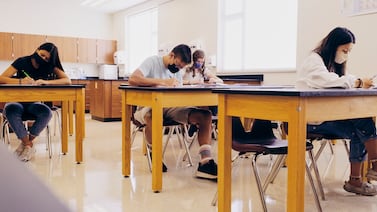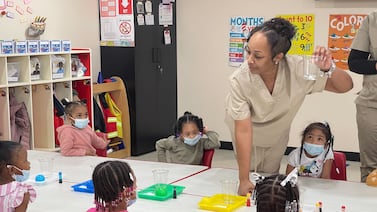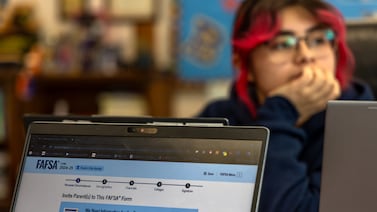Sign up for Chalkbeat’s free weekly newsletter to keep up with how education is changing across the U.S.
It’s a familiar story, with a few interesting plot twists.
That’s how one top federal official described the 2022 test results for American students on a high-profile international exam that allows for comparisons of what 15-year-olds around the world know and can do in math, reading, and science.
The results released Tuesday from the Program for International Student Assessment, or PISA, showed that math scores dropped significantly last year for 15-year-olds in the U.S. compared with 2018, the last time this test was given. But there was also encouraging news: Reading and science scores held steady over that time. And the nation’s PISA rankings actually rose because other countries’ performance dipped.
“These results are another piece of evidence showing the crisis in mathematics achievement,” said Peggy Carr, the commissioner of the National Center for Education Statistics, which administers the PISA in the U.S. “Only now can we see that it is a global concern.”
The decline in math scores following the pandemic has become a topic of national concern, as scores for fourth and eighth graders dropped significantly on a key national test last year. Students in several states also saw big math declines in COVID’s wake, though there’s been some recent recovery.
Some educators say that’s because math skills build on one another, so students who missed critical lessons earlier in the pandemic may have a hard time filling in those blanks and catching up to their current grade level.
The scores come as officials and educators in several states are weighing the best way to teach students math — and how much classes should focus on real-world uses of math versus more theoretical applications. Others are trying to expand access to higher-level math courses like algebra and calculus. Historically, Black and Latino students have had much less access to these classes than their peers.
“There are a lot of hypotheses about what we need to do differently to move ourselves forward in mathematics,” Carr said. “But clearly we haven’t figured it out.”
Even though American students’ average scores dropped or didn’t change much, the U.S. climbed in the international rankings in all three subjects, as scores declined in other countries that tend to outperform the U.S.
Become a Chalkbeat sponsor
The U.S. improved its rankings even as its students reported that their schools were closed on average for longer periods of time during the pandemic than their peers in other Organisation for Economic Co-operation and Development countries.
The relationship between academic performance and the length of school closures was small, Carr said, meaning that the variance in scores was mostly due to other factors. Some OECD countries that reopened for in-person learning more quickly than the U.S. saw steeper drops on the test, she said.
That finding echoes the analysis of a research team released last year that found remote learning was a contributor to score declines, but it wasn’t the primary driver of those academic losses.
Among the 81 international school systems that participated in the PISA last year, the U.S. ranked 26th in math achievement, up from 29th among the same group of school systems in 2018.
Among the 37 members of the OECD that gave the test, most of which are higher-income countries, the U.S. ranked 22nd in math achievement.
Norway, France, Iceland, and Portugal, for example, all scored better than the U.S. in math in 2018, but are now scoring at the same level statistically.
The U.S. ranked sixth in reading and 10th in science among the 81 school systems that gave the PISA last year. In 2018, the U.S. ranked eighth in reading and 11th in science.
The steady reading results among U.S. high schoolers run counter to the significant reading declines observed last year for younger students on the National Assessment of Educational Progress, or NAEP. Academic recovery in reading has also been uneven. Carr said that could indicate that the NAEP has a higher difficulty level than the PISA.
U.S. Secretary of Education Miguel Cardona pointed to the results as an indicator of the impact of the federal investments made in schools during the pandemic, much of which was spent on academic recovery initiatives, such as tutoring and mental health support for students.
That spending “kept the United States in the game,” Cardona said. Without it, he said, the U.S. would be “in the same boat” as other countries that didn’t spend as much and saw steeper declines.
Become a Chalkbeat sponsor
The PISA was given to around 4,600 students across the U.S. and some 620,000 students around the world.
Kalyn Belsha is a senior national education reporter based in Chicago. Contact her at kbelsha@chalkbeat.org.







